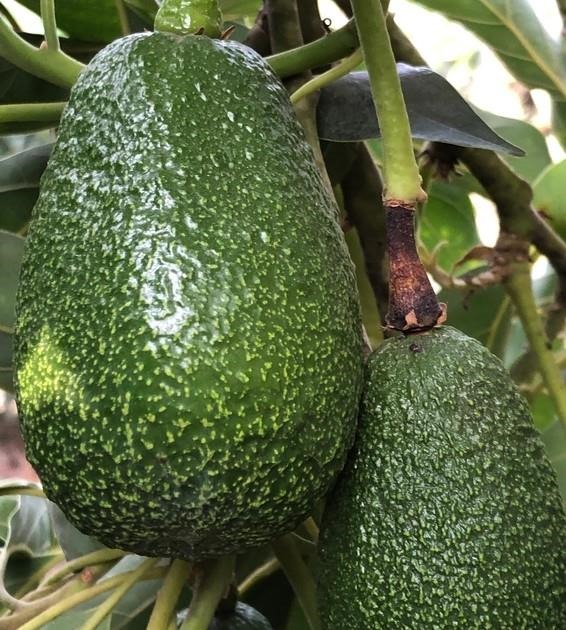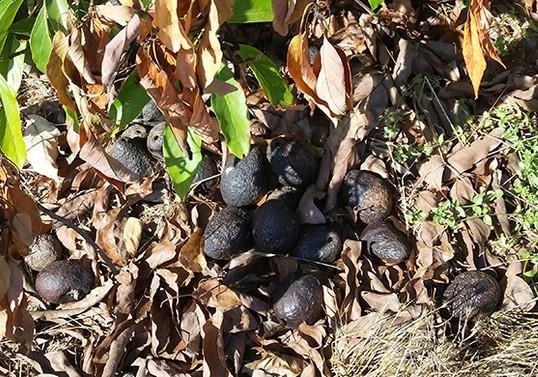By Ben Faber
It's been hot and there is leaf damage. Those damaged leaves can protect the tree now and the fruit. Don't prune the the trees until you see the full extent of the damage and can still use those dead leaves to protect the rest of the tree.
Fruit drop happens soon after, or slowly, depressingly over several weeks after a heat wave. The stem turns brown, cutting off moisture to the fruit, and they drop.


If you see significant leaf drop in your groves due to excessive heat, the following actions are recommended:
- As soon as possible, whitewash branches exposed to the sun with special attention paid to branches on the west and south sides of the tree.
- Trees that lose a significant portion of leaves cannot efficiently move water, therefore restrict irrigation amounts to ensure you avoid creating wet, soggy conditions that can lead to root rot. It's best to irrigate less frequently and with smaller amounts of water.
- Do not prune your trees — leave hanging leaves in place to protect the tree from sunburn. Once new tree growth has occurred (in the next 3 – 6 months), pruning can take place on living wood.
- Adjust fertilization as you would with a frost-damaged tree: reducing the amount of fertilizer until the tree is re-established. If you see signs of a particular nutrient deficiency, adjust fertilization accordingly.
Source : ucanr.edu